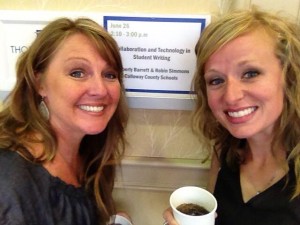 “First and foremost, I want writing to be something that my students aren’t afraid of, which is very difficult at the middle school level because writing is very hard. It’s my goal to encourage strengths first before we review their weaknesses.”
“First and foremost, I want writing to be something that my students aren’t afraid of, which is very difficult at the middle school level because writing is very hard. It’s my goal to encourage strengths first before we review their weaknesses.”
Robin Simmons (right) with her collaborating colleague, Kimberly Barrett, presenting at the ISLN Conference in Lexington, KY, 2013.
I was beyond excited when Robin Simmons agreed to talk with me about her philosophy and practices of teaching writing for this week’s post. Robin and I met seven years ago when she was teaching social studies in Stafford, Virginia. Even though she was fairly new to teaching, we could all see that she had a certain spark that made her a gifted and natural teacher. As life goes, Robin and her family left Virginia, but she continued teaching in each state where she and her husband, Scott, moved. In Oklahoma and Kentucky, she ignited her students’ desire to grow as learners and collaborators.
It has been ten years since Robin started teaching. While she has taught English at both the middle and high school levels, her latest position is with 8th graders at Calloway County Middle School in Murray, Kentucky. In the time since I first met her, Robin has pursued further training through National Board and National Writing Project Certifications and has developed a definite philosophy on the role and importance of writing in her classroom.
Robin explains, “First, I want writing to be something my students aren’t afraid of, which is very difficult at the middle school level because writing is very hard. Kelly Gallagher talks about how writing should be a challenge, but that’s also why kids are so apprehensive about it. I try my best to get kids to want to write by using things they are interested in. If I have a student who loves 4-wheeling, I try to get them to write about that first, just so they can see that writing isn’t that scary and to have some success early on.”
Though they are well past the first month of school in Kentucky, Robin says that she has yet to place a grade on any writing her students have done. She has found that by starting with descriptive feedback and positive encouragement, her students find the confidence to accept the things they need to change in their writing when they work on editing, revising and peer review later in the year. Robin says, “Recently, I had a student who didn’t have correct punctuation or formatting in his dialogue, but he included a lot of details and elaboration. I praised those elements so that he wouldn’t get bogged down by the errors. My goal is to encourage strengths before I review their weaknesses with them.”
Through strategic questioning in her feedback, Robin also motivates her students to dig deeper when they are writing. She explains, “I tend to write many guiding questions all over their work to get them to think about elaboration. If they have a paragraph that has a great main idea but doesn’t have a lot of details or commentary, I try to write questions and comments to help them learn to add explanation. The cool thing is that later in the year I start to see them doing the same thing on their peer reviews, so I know it’s working.”
Robin has generously agreed to share some of the strategies that she uses in her classroom. We had some difficulties with the photographs this evening, but they will be coming later this week. I have added links to pages that might be of interest to the reader, and take a look at Robin’s classroom blog for more information on many of the methods she outlines here. Here is Robin in her own words:
First, I want to say that much of my development as a teacher has come from colleagues I’ve worked with and met over the years. This is my tenth year of teaching, my fifth year at Calloway County Middle School, and I would not be the teacher I am today without several people I work with day in and day out. Kimberly Barrett, another National Board Certified Teacher and National Writing Project alum with whom I work closely, is someone who has helped me generate these ideas. I often use the pronoun “we” as I write, because we work so closely and it’s definitely not right for me to claim all of these ideas as my own. I encourage you to check out Kimberly’s classroom website for more great writing ideas.
After attending Murray State University’s National Writing Project in 2011, my colleagues and I changed the way we taught reading and writing by focusing on using a Writer’s Notebook. For our classes, we call this composition notebook their “ThinkBook” since it’s a place for them to think and collect ideas for writing. At the beginning of the year, students have the opportunity to personalize their ThinkBook using items like magazine clippings, personal pictures, drawings, and scrapbook paper for example. One year, I had a student who loved the energy drink Monster and collected the color tabs that came on them, glued them on his ThinkBook cover, and called it his own!
One way we use their ThinkBook is to create anchor charts for reading and writing strategies. This year, we want to give students choice in the type of writing they’re working on, so we’ve spent time creating anchor charts for the three types of writing aligned with the Common Core Standards in addition to reading strategies from Kylene Beers and Bob Probst’s Notice & Note. These are guiding texts we use during the entire year as students grow as writers. Students help create these anchor charts as we access their prior knowledge from other English and Language Arts (ELA) classes. As we write and read, we reference these pages to guide our thinking.
We also create anchor charts for editing and revision strategies that we reference all year. Kelly Gallagher’s guidance helped us generate these pages and we use them constantly! Throughout the year, we narrow our focus to one element of each acronym so students grasp what each looks like. We use student samples of writing, samples of our own writing, and samples from past students for this process.
Another place we find sources for anchor charts in their ThinkBook is Pinterest; it’s a treasure trove of ideas. If you haven’t spent time searching for reading and writing ideas, make it a priority! Recently, we found an anchor chart for how to structure individual paragraphs within informative and argument writing using the acronym PEEL. Several students used this page this week as they wrote informative pieces.
It’s important to note that when students create anchor pages, we create anchor pages right along with them. I have a ThinkBook for every single class I teach. Yes, I rewrite the same pages over and over each day, but I feel like this is extremely important for a few reasons. It shows the students that I’m not just a teacher dictating what they do in the classroom. If I ask them to do something, I do it, too. We follow the “I do, we do, you do” model. I’ll model whatever we’re learning first, we’ll practice together, and then students will practice individually. Another reason why this is important is it reminds me what it’s like to be in their shoes. It’s so easy to forget what it’s like to be a student, much less a student sitting in my own class. I want to know what they’re feeling. If I’m overwhelmed, I know they’re definitely feeling it much more than I am.
In addition to anchor charts, students use their ThinkBook for Quick Writes, vocabulary and word study, and collecting ideas for their own writing. We store testing data and goals here as well. Our hope is that students take their ThinkBook with them when they go to high school, since they’ll be working on similar types of writing and reading strategies at a higher level. We often hear of students referencing them, since they essentially create their own textbook in 8<sup>th</sup> grade.
There are several ways students and teachers in other content areas can use their ThinkBooks to guide writing in their own classrooms. Here’s a list of ideas of ways other content teachers could use them in addition to pictures of pages in our students ThinkBooks this year:
- Science or social studies teachers could use the Informative and PEEL anchor charts when students write pieces in their class. The PEEL anchor chart focuses on how to write a paragraph using textual evidence and elaboration. For example, if a student wrote an article about the causes and effects of the Civil War, the PEEL anchor chart could guide students in elaborating on the main ideas of their piece.
- Math teachers might have students use this anchor chart for paragraph writing when discussing different ways to solve multi-step equations.
- Science teachers could use the anchor chart when students write informative pieces about brain research or environmental issues. They also might use an informative anchor chart we build focused on different text structures.
Often, non-ELA teachers are unsure how to teach students how to peer review each other’s work. After writing a draft of a piece for class, teachers could reference the anchor pages for CUPS and STAR to edit and revise their writing. These pages serve as a guide for students in the editing and revising process and can easily be used in other areas.
We also have students generate pages in their ThinkBook called “Writing Reminders.” On these pages, students write down an abbreviated version of the Common Core Standards for each specific type of writing, they take descriptive feedback from their peers and from me for that type of writing noting what they specifically need to work on. I find that students quickly toss papers with hours of my hard work and feedback on it; this strategy helps students DO something with the feedback and it can be applied to other classes. If another content teacher had their students write a piece that focuses on that type of writing, students can pull out their ThinkBook and focus on their strengths and weaknesses in that area.
For reading strategies, social studies teachers might specifically use the Notice & Note Signpost anchor charts for analyzing texts. If they’re reading a narrative about Native Americans on the Trail of Tears, they could have students identify a place to analyze what’s happening using the signposts. If they read a narrative written by someone experiencing the Boston Tea Party, they might use them the same way.
In addition to blogging, we also use Twitter in our classes to connect students with each other and the broader classroom. Three years ago, Kimberly and I started two hashtags for our classes, #ccmsread and #ccmswrite. Students have used #ccmsread to connect with young adult authors and talk about their reading with others. Students have used #ccmswrite to note work they’re doing with their writing while we engaged in peer review. Using this technology engages students and creates a “history” of our work in class. We love when students tweet us using these hashtags after they’ve moved on to the ninth grade to talk to us about their reading and writing. Other content teachers could use these hashtags to have students discuss what they’re reading in class and what they think about it. This would allow students to see that the skills they’re learning and perfecting in the ELA classroom apply to other content areas as well.
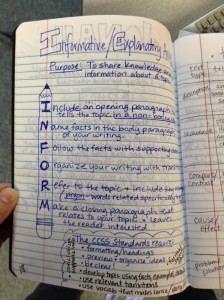
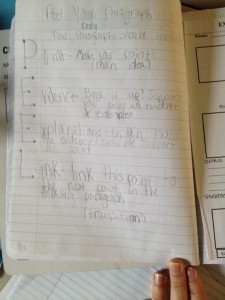
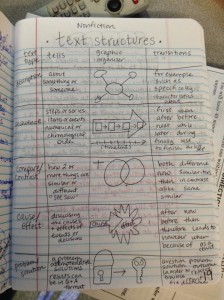
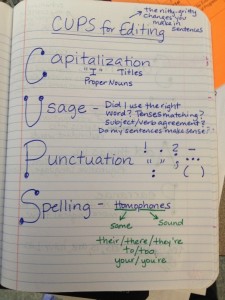
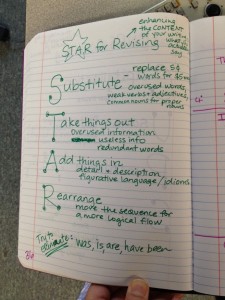
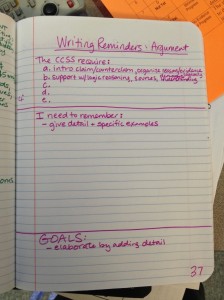
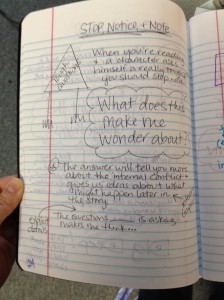
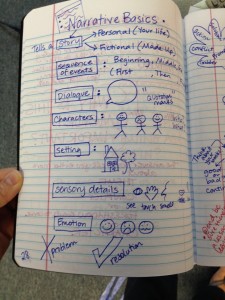
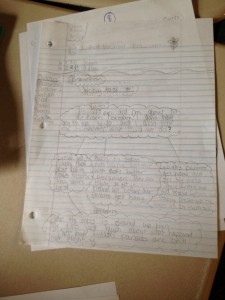
Leave a Reply